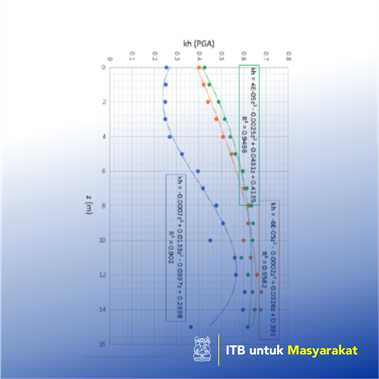

Dedi Apriadi
Based on the pseudostatic results that tends too conservative, the researchers developed a reduction value in the form of horizontal seismic coefficient (kh). However, previous studies regarding horizontal seismic coefficient for sheet pile applications have not been acknowledged, as well as standards that have existed, such as Eurocode which more focused on the rigid wall. Whereas for SNI 8460:2017 (Geotechnical Designs Standards) in section 12.2.5 stated that the kh value can be taken at 50% PGA with a 1-2 inch allowable deformations in general. Thus, it is necessary to obtain the exact kh value for sheet pile design as a suggestion for Indonesia geotechnical standard. The research methodology illustrated in a flow diagram as attached. This research focused on the comparison between dynamic analysis dan pseudostatic analysis on 24 schemes with various combination on retaining wall height, earthquake mechanism, site class, and PGA magnitude. The numerical modeling is carried out as illustrated in figure below. Based on several analysis, the study conducted kh formula suggestion as a function of depth according to retaining wall height, earthquake mechanism, site class, and PGA.
Penerapan Karya Tulis
Pseudostatic analysis is performed by equivalent the earthquake force to a horizontal force. The pseudostatic method has been developed by several researchers such as Okabe (1926), and Mononobe & Matsuo (1929), well known as the Mononobe Okabe method (Kramer, 1996). One of the shortcomings of this method is that transient earthquakes cannot be performed. This transient earthquake means that the earthquake accelerations occurred as a function of time, while for the pseudostatic methods the earthquake acceleration values is calculated as an acceleration value. In the world of engineering, the tendency that occurred is to use the greatest value of the force incurred, so that the highest acceleration value chosen in the pseudostatic analysis. However, from a previous study, the value obtained from the pseudostatic method is too conservative compared to dynamic analysis that modeled the actual conditions.